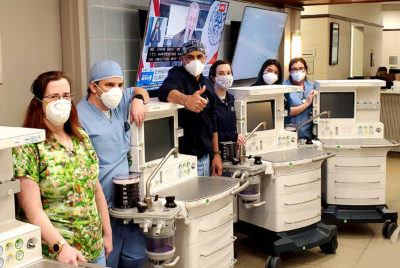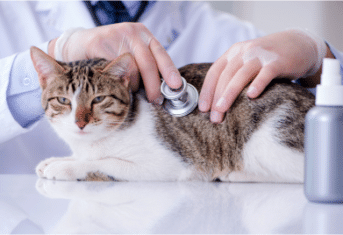What’s the Difference Between COVID-19 and SARS-CoV-2? A Pandemic Glossary for Pet Families

What’s the Difference Between COVID-19 and SARS-CoV-2? A Pandemic Glossary for Pet Families
The COVID-19 pandemic has filled every news story with words that were once familiar but are now fraught with nuance. What is the difference between infection and disease? Are SARS-CoV-2 and COVID-19 the same thing? Why are there different tests?
In this blog post, I’ll try to clarify some commonly misused words and provide real-life examples of how the word applies to animals during the COVID-19 pandemic.
SARS-CoV-2
SARS-CoV-2 stands for “severe acute respiratory syndrome coronavirus 2.” It is the virus that causes the disease COVID-19 in humans. In animals, SARS-CoV-2 also refers to the disease.
COVID-19
COVID-19 stands for “coronavirus disease 2019.” COVID-19 is the disease caused by the SARS-CoV-2 virus in humans. In animals, the disease is referred to as SARS-CoV-2.
Infection
The condition when a microorganism, bacteria, virus or parasite has attached to, invaded and is multiplying/reproducing in or on a patient. This patient may or may not be sick.
Example: Two dogs in Hong Kong repeatedly tested positive forSARS-CoV-2, but they did not display any signs of illness, so they were not diagnosed with the SARS-CoV-2 disease.
Experimental infection
An infection induced in a laboratory rather than acquired naturally.
Example: Scientific publications report laboratory studies showing ferrets can be infected with SARS-CoV-2 when a solution containing live virus is squired into their nose.
Disease
A condition that impairs the normal functioning of a patient. The diagnosis of a disease is a clinical determination based on what the patient’s clinical signs are, what the risk factors are, what the laboratory testing shows.
Example: The two dogs in Hong Kong tested positive for the SARS-CoV-2 virus, but they did not show clinical signs of illness, so they were not diagnosed with a disease. However, the two pet cats in New York State and the tigers and lions at the Bronx Zoo, tested positive for the SARS-CoV-2 virus and were displaying clinical sings of illness, so they diagnosed with the disease SARS-CoV-2.
Antibody
A protein produced by the body’s immune system in response to an infection. The presence of an antibody in the bloodstream indicates prior exposure to the microorganism. The function of an antibody is to disable a microorganism like a virus or bacteria. Usually the presence of an antibody protects a person or animal against a subsequent infection with the same microorganism.
Example: Antibodies against SARS-CoV-2 were identified in cats from Wuhan, China suggesting they had been infected with SARS-CoV-2.
Infectious
Having the ability to transmit a disease to another animal or person. An infectious patient may or may not be sick. An infectious patient without illness can also be called a carrier.
Virus
A virus is a microorganism the uses a small piece of genetic code to replicate inside a living organism.
Real Time Polymerase Chain Reaction (RT-PCR)
A test that detects the presence of a specific piece of genetic material, such as a virus, in a patient sample.
Example: Nadia, the Bronx Zoo Malayan tiger, had RT PCR performed on swabs from her nose, throat and respiratory tract. The other lions and tigers at the Bronx Zoo had the genetic material of SARS-CoV-2 identified from their feces.
To help you understand why there are so many different aspects of SARS-CoV-2 in animals, the Smithsonian magazine has a most informative article.

































